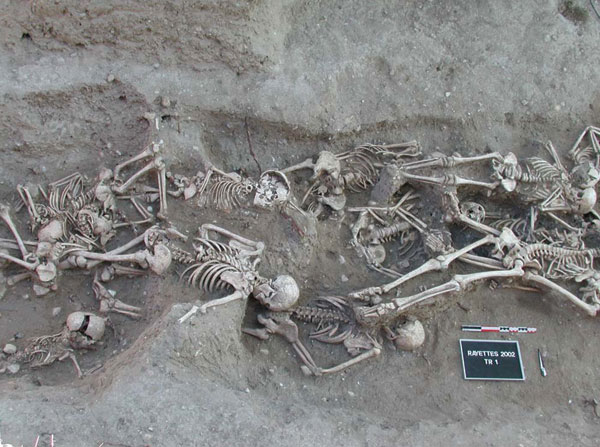Volume 13, Number 2—February 2007
Dispatch
Yersinia pestis Orientalis in Remains of Ancient Plague Patients
Figure

Figure. Skeletons from a mass grave in Martigues, 1720–1721, yielded molecular evidence for the Yersinia pestis Orientalis biotype. Photograph: S. Tzortzis
Page created: June 29, 2010
Page updated: June 29, 2010
Page reviewed: June 29, 2010
The conclusions, findings, and opinions expressed by authors contributing to this journal do not necessarily reflect the official position of the U.S. Department of Health and Human Services, the Public Health Service, the Centers for Disease Control and Prevention, or the authors' affiliated institutions. Use of trade names is for identification only and does not imply endorsement by any of the groups named above.